Celtic: Difference between revisions
No edit summary |
No edit summary |
||
| Line 23: | Line 23: | ||
Celtic mythology is the mythology of Celtic polytheism, the religion of the Iron Age Celts. Like other Iron Age Europeans, the early Celts maintained a polytheistic mythology and religious structure. Among Celts in close contact with Ancient Rome, such as the Gauls and Celtiberians, their mythology did not survive the Roman empire, their subsequent conversion to Christianity, and the loss of their Celtic languages. | Celtic mythology is the mythology of Celtic polytheism, the religion of the Iron Age Celts. Like other Iron Age Europeans, the early Celts maintained a polytheistic mythology and religious structure. Among Celts in close contact with Ancient Rome, such as the Gauls and Celtiberians, their mythology did not survive the Roman empire, their subsequent conversion to Christianity, and the loss of their Celtic languages. | ||
[[Image:Detail-77987.jpg|thumb|center|Depiction of a scene from Celtic mythology.]] | [[Image:Detail-77987.jpg|thumb|center|Depiction of a scene from Celtic mythology.|class=only_on_mobile]] | ||
[[Image:Detail-77988.jpg|thumb|center|Depiction of a scene from Celtic mythology.|class=only_on_desktop]] | |||
It is mostly through contemporary Roman and Christian sources that their mythology has been preserved. The Celtic peoples who maintained either their political or linguistic identities (such as the Gaels and Brythonic tribes of Ireland and Britain, and the contemporary inhabitants of Brittany in France) left vestigial remnants of their ancestral mythologies, put into written form during the Middle Ages. | It is mostly through contemporary Roman and Christian sources that their mythology has been preserved. The Celtic peoples who maintained either their political or linguistic identities (such as the Gaels and Brythonic tribes of Ireland and Britain, and the contemporary inhabitants of Brittany in France) left vestigial remnants of their ancestral mythologies, put into written form during the Middle Ages. | ||
Latest revision as of 18:33, 8 May 2024
Origins and History
The Celts were an ethnolinguistic group of tribal societies in Iron Age and Medieval Europe who spoke Celtic languages and had a similar culture, although the relationship between the ethnic, linguistic and cultural elements remains uncertain and controversial. The earliest undisputed direct examples of a Celtic language are the Lepontic inscriptions, beginning in the 6th century BC. Continental Celtic languages are attested almost exclusively through inscriptions and place-names.

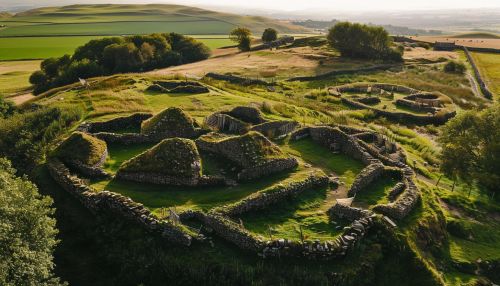
Celtic cultures seem to have been widely diverse, with the use of a Celtic language being the main thing they had in common. Today, the term Celtic generally refers to the languages and respective cultures of Ireland, Scotland, Wales, Cornwall, the Isle of Man, and Brittany, also known as the Celtic nations. These are the regions where four Celtic languages are still spoken to some extent as mother tongues.
Celtic Languages
The Celtic languages form a branch of the larger Indo-European family. By the time speakers of Celtic languages entered history around 400 BC, they were already split into several language groups, and spread over much of Western continental Europe, the Iberian Peninsula, Ireland and Britain. The Celtic languages are generally divided into two major groups: Insular and Continental.
The Insular Celtic group comprises the Goidelic (or Gaelic) and the Brythonic languages. The Continental Celtic group includes the extinct Gaulish and Galatian languages, and possibly the extant Celtiberian, though this latter may instead be a descendant of a proto-Celtic language.
Celtic Art
Celtic art is associated with the peoples known as Celts; those who spoke the Celtic languages in Europe from pre-history through to the modern period, as well as the art of ancient peoples whose language is uncertain, but have cultural and stylistic similarities with speakers of Celtic languages.
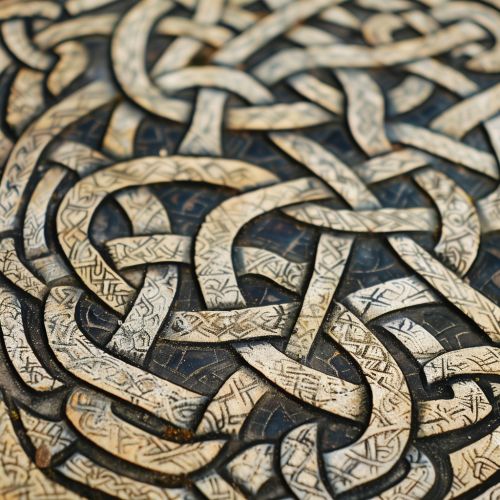
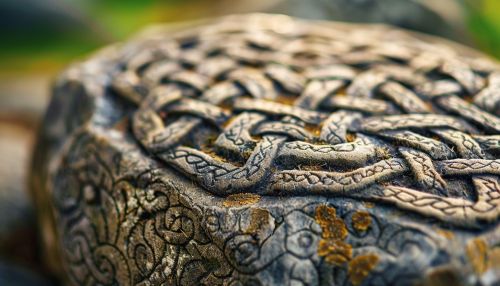
Celtic art is a difficult term to define, covering a huge expanse of time, geography and cultures. A case has been made for artistic continuity in Europe from the Bronze Age, and indeed the preceding Neolithic age; however archaeologists generally use "Celtic" to refer to the culture of the European Iron Age from around 1000 BC onwards, until the conquest by the Roman Empire during the 1st century AD. Early Celtic art is another term used for this period, stretching in Britain to about 150 AD. The Early Medieval art of Britain and Ireland, which produced the Book of Kells and other masterpieces, and is what "Celtic art" evokes for much of the general public in the English-speaking world, is called Insular art in art history.
Celtic Mythology
Celtic mythology is the mythology of Celtic polytheism, the religion of the Iron Age Celts. Like other Iron Age Europeans, the early Celts maintained a polytheistic mythology and religious structure. Among Celts in close contact with Ancient Rome, such as the Gauls and Celtiberians, their mythology did not survive the Roman empire, their subsequent conversion to Christianity, and the loss of their Celtic languages.
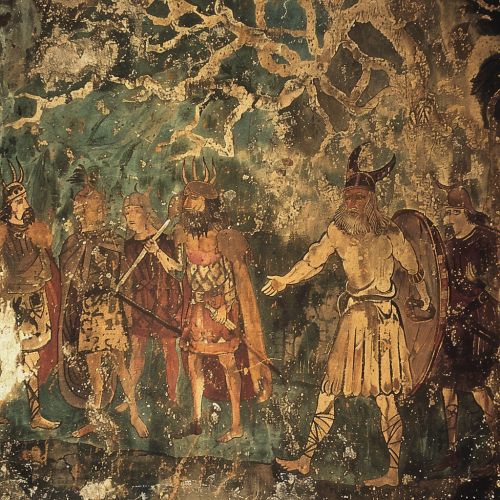
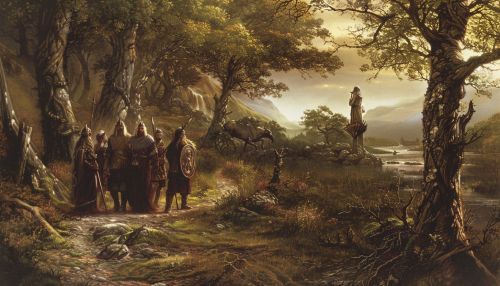
It is mostly through contemporary Roman and Christian sources that their mythology has been preserved. The Celtic peoples who maintained either their political or linguistic identities (such as the Gaels and Brythonic tribes of Ireland and Britain, and the contemporary inhabitants of Brittany in France) left vestigial remnants of their ancestral mythologies, put into written form during the Middle Ages.
